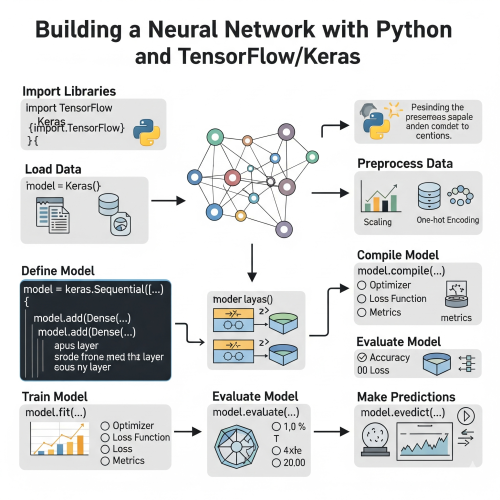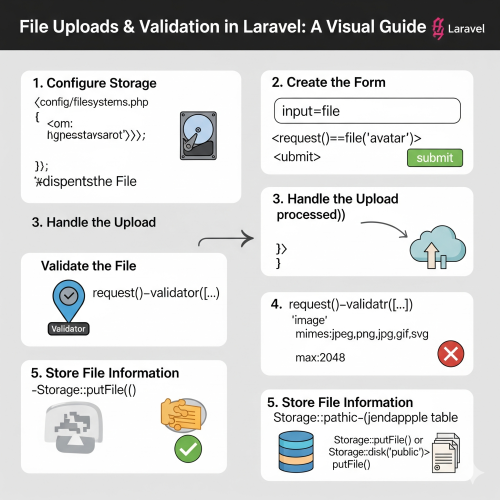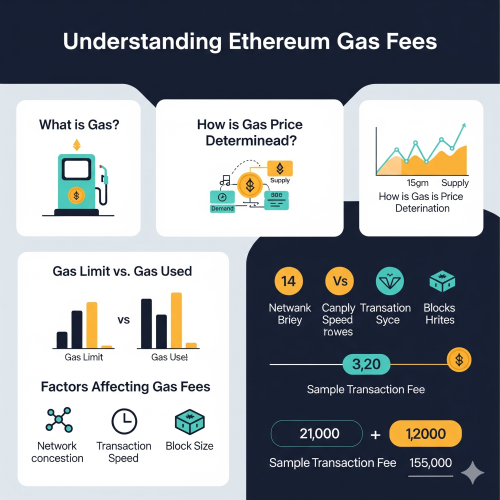If you've been dabbling in smart contract development, you've probably heard of Hardhat. But what exactly is it, and why should you care? Well, imagine trying to build a house without proper tools - you might manage it, but it's gonna be messy and take forever. That's essentially what developing smart contracts was like before frameworks like Hardhat came along.
Hardhat is a development environment that makes building, testing, and deploying smart contracts feel less like wrestling with a bear and more like... well, actual development work. It's built specifically for Ethereum, and honestly, it's become the go-to choice for most developers I know.
What Makes Hardhat Different?
Before we dive into the technical stuff, let's talk about why Hardhat exists. Back in the day, we had Truffle, which was decent, but developers wanted something more flexible and powerful. Hardhat came along with some pretty neat features that made everyone sit up and take notice.
- Built-in local Ethereum network that's fast and reliable for testing
- Detailed stack traces when your contracts fail (trust me, you'll need this)
- Flexible plugin architecture that lets you extend functionality
- TypeScript support out of the box
- Console.log debugging in Solidity contracts
The last point there is huge. Being able to console.log from within your smart contracts during development is like having night vision goggles in a dark room.
Setting Up Your First Hardhat Project
Alright, enough theory. Let's get our hands dirty. First thing you'll need is Node.js installed on your machine. If you don't have it, grab it from nodejs.org. Once that's sorted, we can create our project.
mkdir my-hardhat-project
cd my-hardhat-project
npm init -y
npm install --save-dev hardhatNow comes the fun part. Hardhat has this neat initialization process that sets everything up for you:
npx hardhatYou'll see a menu with options. For beginners, I'd recommend choosing "Create a JavaScript project" or "Create a TypeScript project" depending on your preference. The setup wizard will ask you a few questions and then generate all the boilerplate code you need.


Understanding the Project Structure
Once the setup is complete, you'll notice Hardhat has created several folders and files. Let's break down what each one does:
- contracts/ - This is where your Solidity smart contracts live
- scripts/ - Deployment scripts and other automation go here
- test/ - Your test files (and you better write tests!)
- hardhat.config.js - The main configuration file
The config file is particularly important. It's where you'll define networks, configure plugins, and set up compiler options. Here's what a basic config looks like:
require("@nomicfoundation/hardhat-toolbox");
/** @type import('hardhat/config').HardhatUserConfig */
module.exports = {
solidity: "0.8.19",
networks: {
localhost: {
url: "http://127.0.0.1:8545"
},
sepolia: {
url: `https://sepolia.infura.io/v3/${process.env.INFURA_PROJECT_ID}`,
accounts: process.env.PRIVATE_KEY !== undefined ? [process.env.PRIVATE_KEY] : [],
}
}
};Writing Your First Smart Contract
Let's create something simple but practical - a basic token contract. Create a new file in the contracts folder called SimpleToken.sol:
// SPDX-License-Identifier: MIT
pragma solidity ^0.8.0;
contract SimpleToken {
string public name = "SimpleToken";
string public symbol = "SIM";
uint8 public decimals = 18;
uint256 public totalSupply;
mapping(address => uint256) public balanceOf;
mapping(address => mapping(address => uint256)) public allowance;
event Transfer(address indexed from, address indexed to, uint256 value);
event Approval(address indexed owner, address indexed spender, uint256 value);
constructor(uint256 _initialSupply) {
totalSupply = _initialSupply * 10**decimals;
balanceOf[msg.sender] = totalSupply;
}
function transfer(address _to, uint256 _value) public returns (bool success) {
require(balanceOf[msg.sender] >= _value, "Insufficient balance");
require(_to != address(0), "Invalid address");
balanceOf[msg.sender] -= _value;
balanceOf[_to] += _value;
emit Transfer(msg.sender, _to, _value);
return true;
}
function approve(address _spender, uint256 _value) public returns (bool success) {
allowance[msg.sender][_spender] = _value;
emit Approval(msg.sender, _spender, _value);
return true;
}
}This contract implements basic ERC-20 functionality. Nothing fancy, but it shows the essential patterns you'll use in most smart contracts - state variables, mappings, events, and functions with proper error handling.
Testing Your Contract
Here's where Hardhat really shines. The testing framework is robust and the local network spins up instantly. Let's write some tests for our token contract:
const { expect } = require("chai");
const { ethers } = require("hardhat");
describe("SimpleToken", function () {
let simpleToken;
let owner;
let addr1;
let addr2;
beforeEach(async function () {
[owner, addr1, addr2] = await ethers.getSigners();
const SimpleToken = await ethers.getContractFactory("SimpleToken");
simpleToken = await SimpleToken.deploy(1000000); // 1 million tokens
await simpleToken.deployed();
});
it("Should set the right owner and total supply", async function () {
expect(await simpleToken.balanceOf(owner.address)).to.equal(
ethers.utils.parseEther("1000000")
);
expect(await simpleToken.totalSupply()).to.equal(
ethers.utils.parseEther("1000000")
);
});
it("Should transfer tokens correctly", async function () {
const transferAmount = ethers.utils.parseEther("100");
await simpleToken.transfer(addr1.address, transferAmount);
expect(await simpleToken.balanceOf(addr1.address)).to.equal(transferAmount);
expect(await simpleToken.balanceOf(owner.address)).to.equal(
ethers.utils.parseEther("999900")
);
});
it("Should fail if sender doesn't have enough tokens", async function () {
const initialBalance = await simpleToken.balanceOf(owner.address);
const overAmount = initialBalance.add(1);
await expect(
simpleToken.transfer(addr1.address, overAmount)
).to.be.revertedWith("Insufficient balance");
});
});Run these tests with:
npx hardhat testOne thing I learned the hard way is that good tests aren't just about making sure your code works - they're about making sure it fails gracefully when it should. Always test both the happy path and the edge cases.
A Developer's Hard-Earned Wisdom
Deploying Your Contract
Once your tests are passing (and please, make sure they're passing), it's time to deploy. First, let's create a deployment script in the scripts folder:
const hre = require("hardhat");
async function main() {
const initialSupply = 1000000; // 1 million tokens
console.log("Deploying SimpleToken with initial supply:", initialSupply);
const SimpleToken = await hre.ethers.getContractFactory("SimpleToken");
const simpleToken = await SimpleToken.deploy(initialSupply);
await simpleToken.deployed();
console.log("SimpleToken deployed to:", simpleToken.address);
console.log("Transaction hash:", simpleToken.deployTransaction.hash);
// Wait for a few confirmations
await simpleToken.deployTransaction.wait(5);
console.log("Deployment confirmed!");
}
main()
.then(() => process.exit(0))
.catch((error) => {
console.error(error);
process.exit(1);
});To deploy to the local Hardhat network:
npx hardhat run scripts/deploy.jsFor testnet deployment (like Sepolia), you'll need to set up environment variables for your private key and Infura project ID, then run:
npx hardhat run scripts/deploy.js --network sepoliaDebugging and Console Logging
One of Hardhat's killer features is the ability to use console.log in your Solidity contracts. Just import it and use it like you would in JavaScript:
import "hardhat/console.sol";
contract DebugExample {
function problematicFunction(uint256 _value) public {
console.log("Input value:", _value);
uint256 result = _value * 2;
console.log("Result after multiplication:", result);
require(result > 0, "Result must be positive");
console.log("Validation passed");
}
}Essential Hardhat Commands
Here are the commands you'll use most often:
- npx hardhat compile - Compiles your contracts
- npx hardhat test - Runs your test suite
- npx hardhat node - Starts a local Ethereum node
- npx hardhat run scripts/deploy.js - Runs deployment scripts
- npx hardhat verify - Verifies contracts on Etherscan
The verify command is particularly useful when you deploy to mainnet or testnets. It publishes your source code so others can interact with your contract through Etherscan's interface.
Common Gotchas and How to Avoid Them
Every developer runs into these issues at some point, so let me save you some headaches:
First, version mismatches between your Solidity compiler and your contracts. Always check that your hardhat.config.js compiler version matches what you're using in your contracts.
Second, gas estimation issues. When deploying to mainnet, always test on a testnet first. Gas costs can be wildly different, and you don't want surprises when you're spending real ETH.
Third, environment variables. Never, ever commit your private keys to version control. Use a .env file and make sure it's in your .gitignore.
Lastly, network configuration problems. If you're getting weird errors when deploying, double-check your RPC URLs and make sure your account has enough ETH for gas fees.
Hardhat has honestly revolutionized how I approach smart contract development. The debugging capabilities alone have saved me countless hours of head-scratching. The local network spins up fast, the error messages are actually helpful, and the testing framework just works.
As you get more comfortable with Hardhat, start exploring plugins. There are plugins for everything - gas reporting, contract verification, coverage analysis, and more. The ecosystem is rich and keeps growing.
Remember, smart contract development is still relatively new, and the tooling is constantly evolving. Hardhat represents the current state of the art, but who knows what we'll have in a few years? For now though, it's your best bet for professional smart contract development.














narkologiyakrasnoyarskBeics
Откачка на дому в Красноярске, важная мероприятие для обеспечения чистоты и здоровья. Канализационные проблемы могут возникнуть внезапно, и в таких случаях необходимо обратиться профессионалов. Профессиональная откачка сточных вод позволит избежать неприятных ситуаций.Среди вариантов откачки можно выделить: обслуживание канализационных систем, обслуживание выгребных ям и срочная откачка. Специальная ассенизаторская техника обеспечит высокое качество выполняемых работ в соответствии с экологическими нормами. На сайте <a href=https://vivod-iz-zapoya-krasnoyarsk016.ru>vivod-iz-zapoya-krasnoyarsk016.ru</a> вы найдете информацию о ценах на услуги и вариантах вызова специалиста. Также доступны устройства для сушки септиков и дренажные системы для предотвращения повторных засоров. Не затягивайте с решением проблемы — решите проблемы с канализацией сегодня!
pansimskBeics
частный пансионат для пожилых людей <a href=https://pansionat-msk015.ru>pansionat-msk015.ru</a> частный дом престарелых
zapojkrasnodarBeics
экстренный вывод из запоя краснодар <a href=https://vivod-iz-zapoya-krasnodar024.ru>vivod-iz-zapoya-krasnodar024.ru</a> лечение запоя краснодар
alkogolizmsmolenskBeics
лечение запоя смоленск <a href=https://vivod-iz-zapoya-smolensk029.ru>vivod-iz-zapoya-smolensk029.ru</a> экстренный вывод из запоя смоленск
pansimskBeics
частный пансионат для престарелых <a href=https://pansionat-msk014.ru>pansionat-msk014.ru</a> дом престарелых
alkogolizmkrasnodarBeics
лечение запоя краснодар <a href=https://vivod-iz-zapoya-krasnodar023.ru>vivod-iz-zapoya-krasnodar023.ru</a> экстренный вывод из запоя
vivodzapojkrasnodarBeics
вывод из запоя круглосуточно краснодар <a href=https://vivod-iz-zapoya-krasnodar022.ru>vivod-iz-zapoya-krasnodar022.ru</a> вывод из запоя круглосуточно краснодар
pansionatmskBeics
пансионат для пожилых с инсультом <a href=https://pansionat-msk013.ru>pansionat-msk013.ru</a> пансионат для лежачих после инсульта
lecheniesmolenskBeics
вывод из запоя цена <a href=https://vivod-iz-zapoya-smolensk027.ru>vivod-iz-zapoya-smolensk027.ru</a> вывод из запоя смоленск
DonaldSlets
best crypto exchange - fast crypto exchange <a href=https://exchangenow.app> change now </a> https://changenow-io.io best cryptocurrency exchange - instant crypto exchange <a href=https://exchangenow.us> exchange crypto </a> https://exchangenow.us crypto exchange without KYC <a href=https://exchangenow.us> exchange crypto </a> https://exchangenow.us